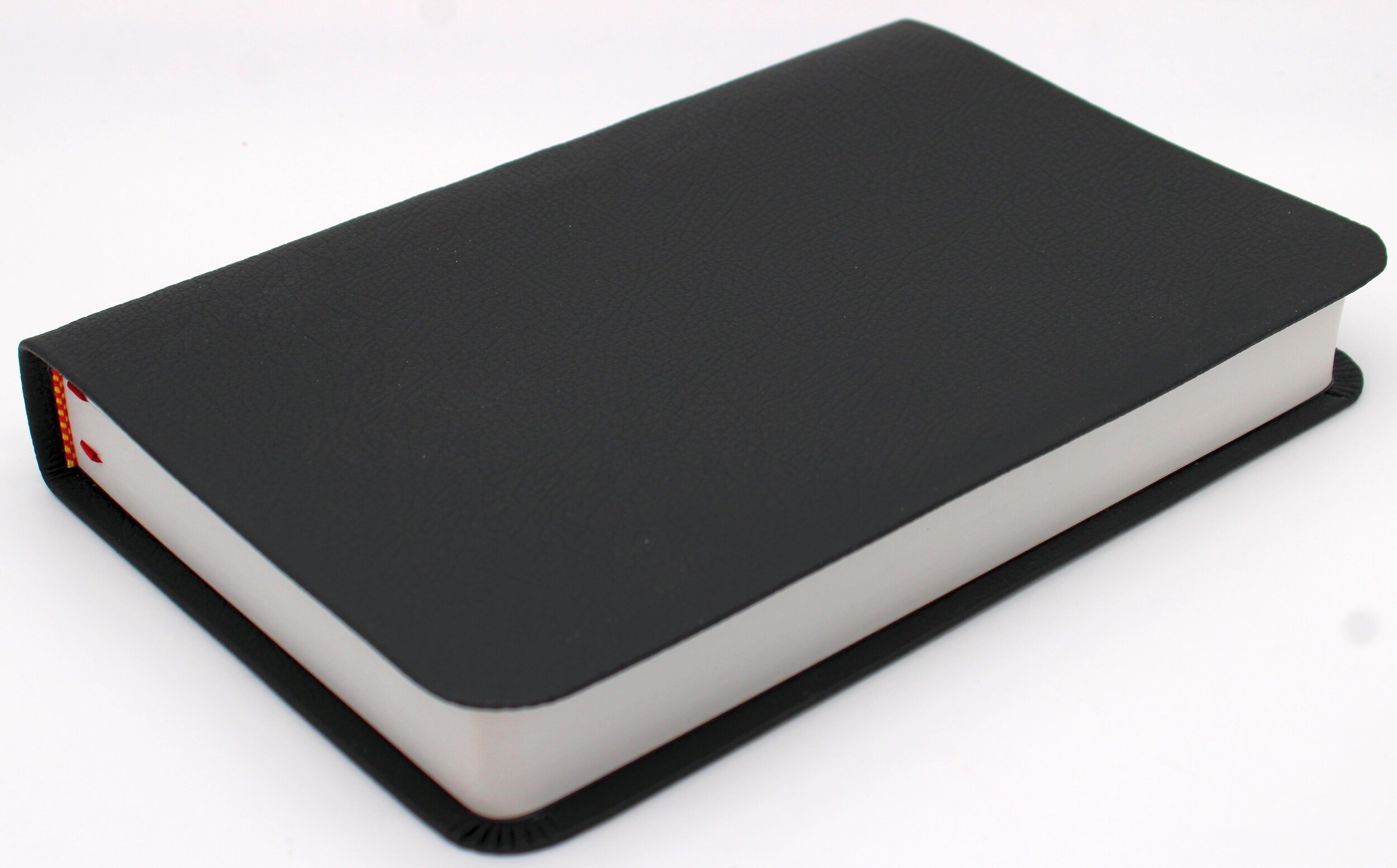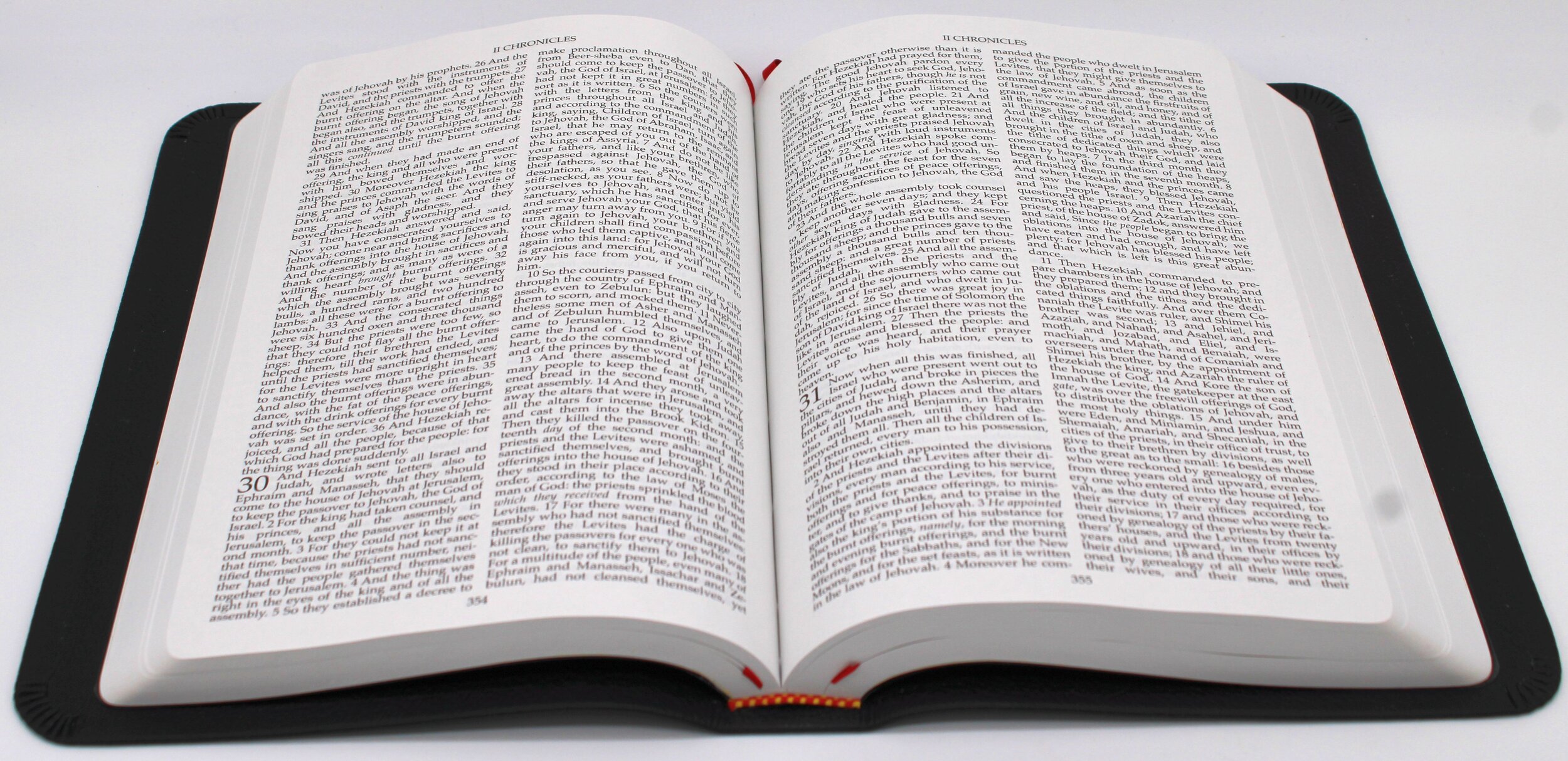


Leather Qualities, Preparation for Use, and Care
Qualities
Genuine leather is a product of nature. Natural markings in the hide, healed scars, and scratches acquired on the range, as well as lighter and darker variations in color, will appear in the finished leather. These are unmistakable identifications of top grain leather. They do not lessen in any way the beauty or quality of the leather. In fact, these characteristic markings and color variations attest to the authentic proof of genuine leather.
Preparation for Use
Please take a few minutes to ready your Bible for reading. Hold the Bible with the spine on a flat, clean surface. Let the front cover drop to the surface , then the back cover. Holding the pages in one hand, gently press down a few pages at the back with the other. Then press down a few pages at the front. Continue this until all the pages have been pressed down. This will ease the spine into use without damage.
Leather Care
With frequent use, the oil from your hands will keep the leather from drying out. If you need to spot-clean, use a damp (not wet) cloth and wipe very gently. If you get the cover wet, blot (not rub) with a paper towel or absorbent cloth.
To keep your leather bound items in beautiful condition, use a leather conditioner to clean, polish and protect every few years. Good conditioners contain fats and/or oils that help lubricate the leather to restore the suppleness. Before applying anything to your leather, test a small inconspicuous area to make sure it doesn't change the color or create a negative affect. Then, follow directions supplied by the conditioner’s manufacturer.
For fresh stains, remove quickly with a damp cloth or sponge, and then dry immediately. For set-in stains, it is best to consult a professional leather cleaner/restoration specialist. To remove mildew, mix equal parts of water and rubbing alcohol. Wipe the area with a cloth dampened in the solution, and then allow it to air dry. If the mildew persists, first clean with a mild soap containing germicide and water. Then remove any soap film with just a damp sponge or cloth and allow to air dry.
If your leather is scratched or damaged, try conditioner first. If that doesn't work sometimes a small amount of shoe polish, matching the color of the leather, can be worked into the scratch to help hide the damage. Follow the instructions on the shoe polish and follow-up with a light buffing with a dry cloth.
Leather items should be stored in a cool dry place away from any heat source (fireplace, furnace duct, ovens, etc.). Do not store in plastic bags as it can encourage the growth of mildew and bacteria.
— Special thanks to Bradford Taliaferro.
